above: visiting the Tiffin factory is always a drool-worthy experience.
If you read our last blog post, you know that we’re in the process of upgrading to a new motorhome! While our upcoming Tiffin Phaeton has DNA in common with our current Tiffin Allegro, there’s quite a lot that’s different. These differences fall into two main categories: the engine & chassis (the stuff that moves us around), and the house (the box we live in). In this article we’ll talk about the some of the engine and chassis differences.
Engine and Chassis
There are two conflicting sentiments in the RV community about diesel motorhomes. One says: “You drive your motorhome 10% of the time, and live in it (parked) 90% of the time, so don’t waste money on a diesel engine and chassis that only benefits you 10% of the time.” The other sentiment says: “Don’t test-drive a diesel motorhome unless you’re prepared to buy one.”
When shopping for our first motorhome in late 2013 we avoided any opportunities to drive a diesel pusher. We’d been told over and over that the difference is like night and day, and we’d never be satisfied with a gas rig if we’d driven a diesel. Well, we’ll soon have a chance to put that assertion to the test!
Rover is built on a Ford F53 chassis with a Ford V10 gas engine in the front. Think of him as a really long and fancy U-Haul truck! He’s never failed to get us over a mountain or across the country, but he doesn’t always do it in comfort. With the big engine roaring right in front of us it can be hard to carry on a conversation while climbing hills. With all his weight resting on springs, the ride can be bouncy and jarring. With a zero-to-sixty time measured in decades (slight exaggeration), it can be stressful merging onto busy highways. His chassis is rated for a maximum of 24,000 lbs. but he weighs almost 21,000 lbs. completely empty, so we can only carry 3,000 lbs. of “stuff” with us. That sounds like plenty until you consider that a full tank of water weighs 650 lbs., a full tank of propane weighs 80 lbs., Opie weighs 80 lbs., and Kathie and I weigh <REDACTED>! We’ve gotten weighed a few times and we’re usually close to our limit. Below we weighed in at 23,500 lbs., and that was with a mostly-empty fresh water tank:
The Phaeton is a “diesel pusher”: diesel because of the engine type, and pusher because the engine is in the rear, not the front. While most diesel motorhome chassis are made by Freightliner, ours (called a PowerGlide chassis) is custom made by Tiffin for a subset of their motorhomes. This lets them integrate the design of the house and chassis to provide a better overall solution vs. working around a 3rd party chassis design. The PowerGlide chassis provides taller and more spacious basement cargo compartments, an independent front suspension, improved electrical wiring, and more.
The Cummins L9 turbodiesel engine in our new rig will provide 1,150 ft-lbs of torque (vs. Rover’s 420 ft-lbs) for better acceleration, easier mountain climbing, and includes a significantly better Allison 3000 transmission. Air brakes and the two-stage compression brake easily keep speeds under control while descending big mountains. The air suspension is reportedly much more comfortable than springs, and with the engine in the back, it’s essentially inaudible from the cockpit. And while the diesel chassis weighs a ton more (6 tons more, actually), it can also carry a lot more weight. Our new cargo carrying capacity will be 6,000 lbs., double Rover’s. Now, whether to fill that extra capacity with 3,000 lbs. of Coke (me), fabric (Kat), or treats (Opie) remains an open question.
There are a lot of other benefits, some big (for us), some small. For example, buying fuel will be much easier now… no more checking Google satellite view for every single gas station to find one that we can fit into! With Rover’s fuel fill on the rear cap, 38′ behind the front of the rig, we’ve found plenty of gas stations that we’d not be able to fit into, or at least wouldn’t be able to get out of once we filled up (since we tow our car, we can’t back up to get out). To pull up to the pump, our nose would be through the store’s window or we’d be blocking the whole parking lot. From now on it’s the big rig diesel truck lanes at Flying J truck stops!
We expect the diesel rig to get at least 25% better fuel economy, but diesel gas is often 10-15% more expensive, and now we need to buy DEF (Diesel Exhaust Fluid) to neutralize our emissions, so we expect fuel costs to be a wash. Oh, but don’t forget the air horns – actually, that’s the only reason we’re upgrading. All shall hear our air horns and despair!
Pretty much the only disadvantage (and it’s a big one) for a diesel chassis is the cost. Apart from the much higher initial purchase price, annual maintenance will be higher as well. We’ve gotten spoiled paying $125 twice a year (i.e. $250/year) for oil and filter changes (7 quarts) and chassis lube. I’ve been told we should plan for $600-$1,000 for our annual diesel engine service, including a 24-quart oil change (gulp!) and various filter replacements. Then every few years the additional required services are even more expensive.
Coming up in our next blog post, a look at our new floor plan and some of the many improvements to the house we’ll be living in for the foreseeable future!
Part 3 – Roughing it… Even More Smoothly

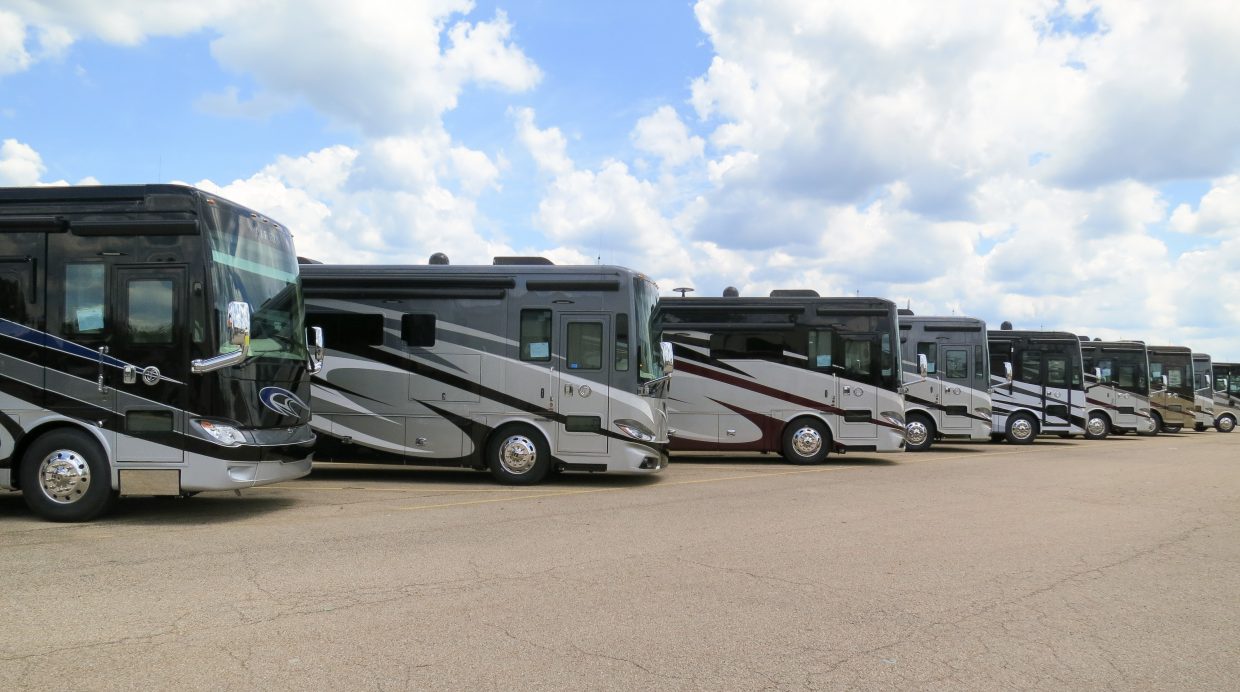

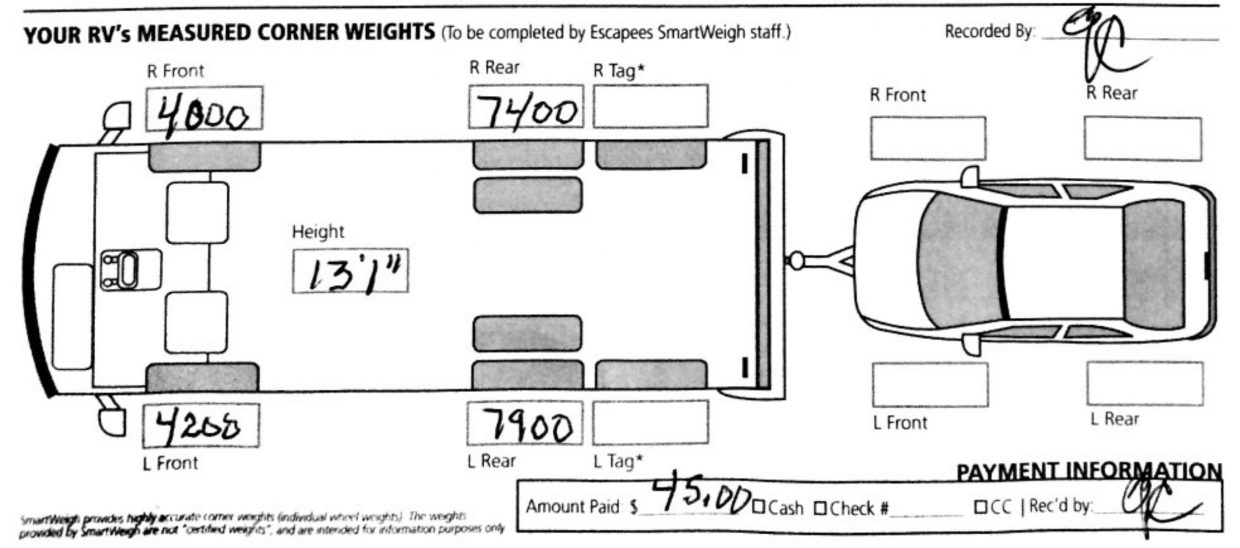
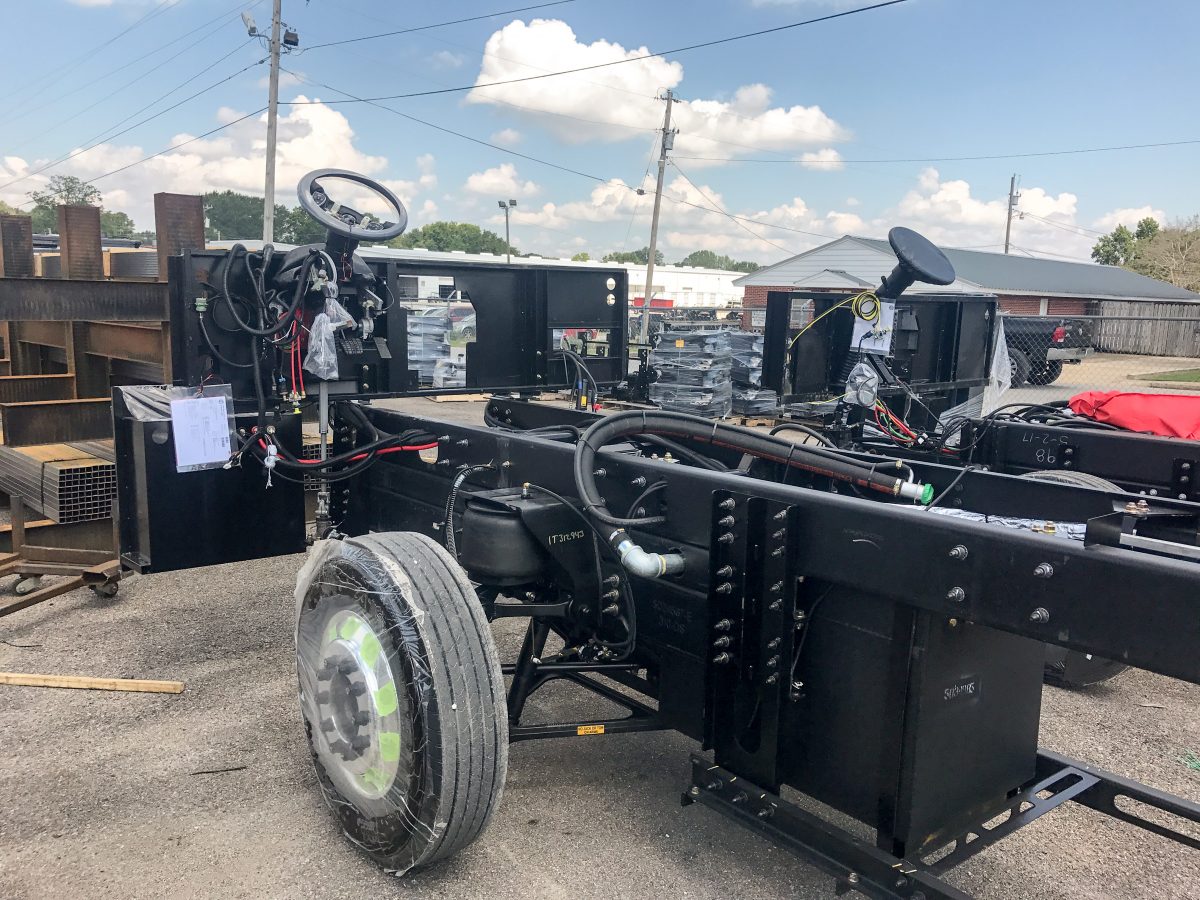
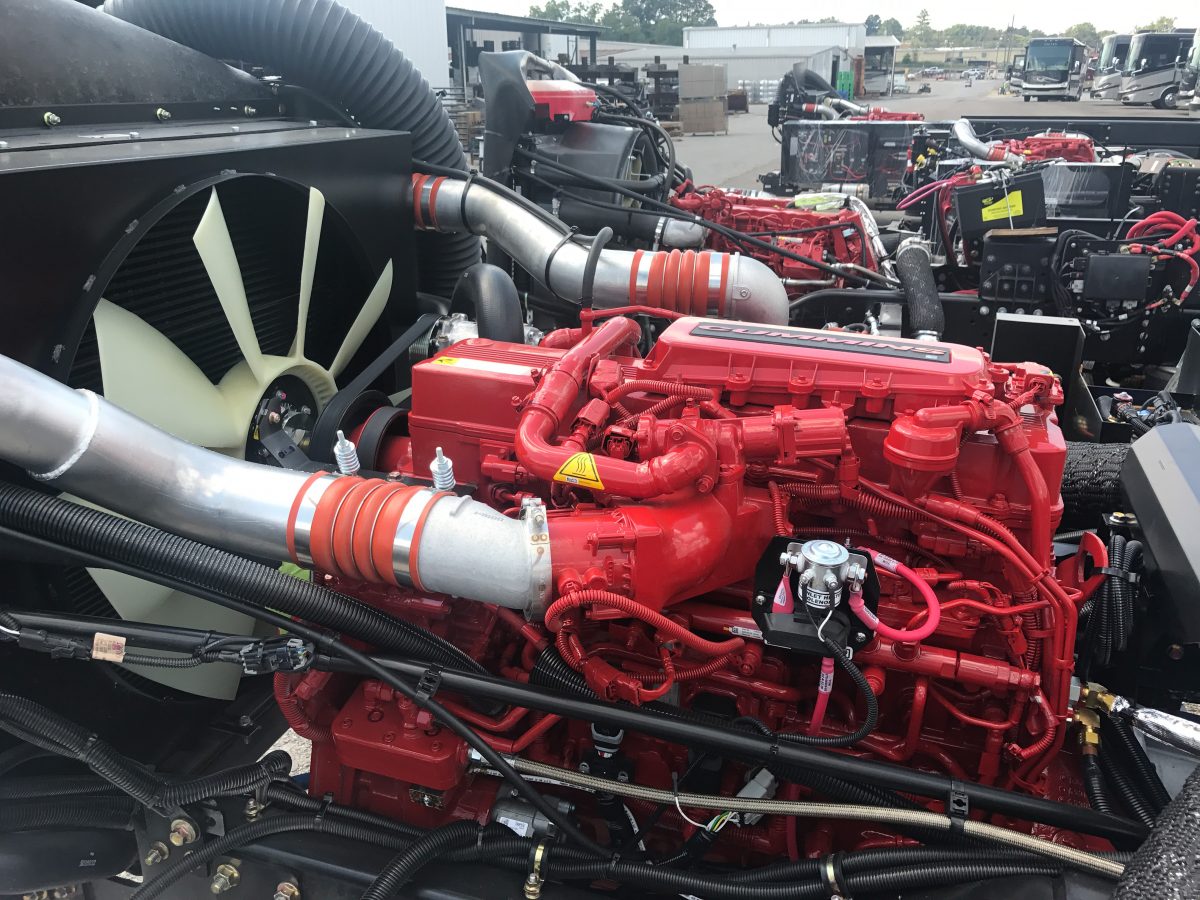
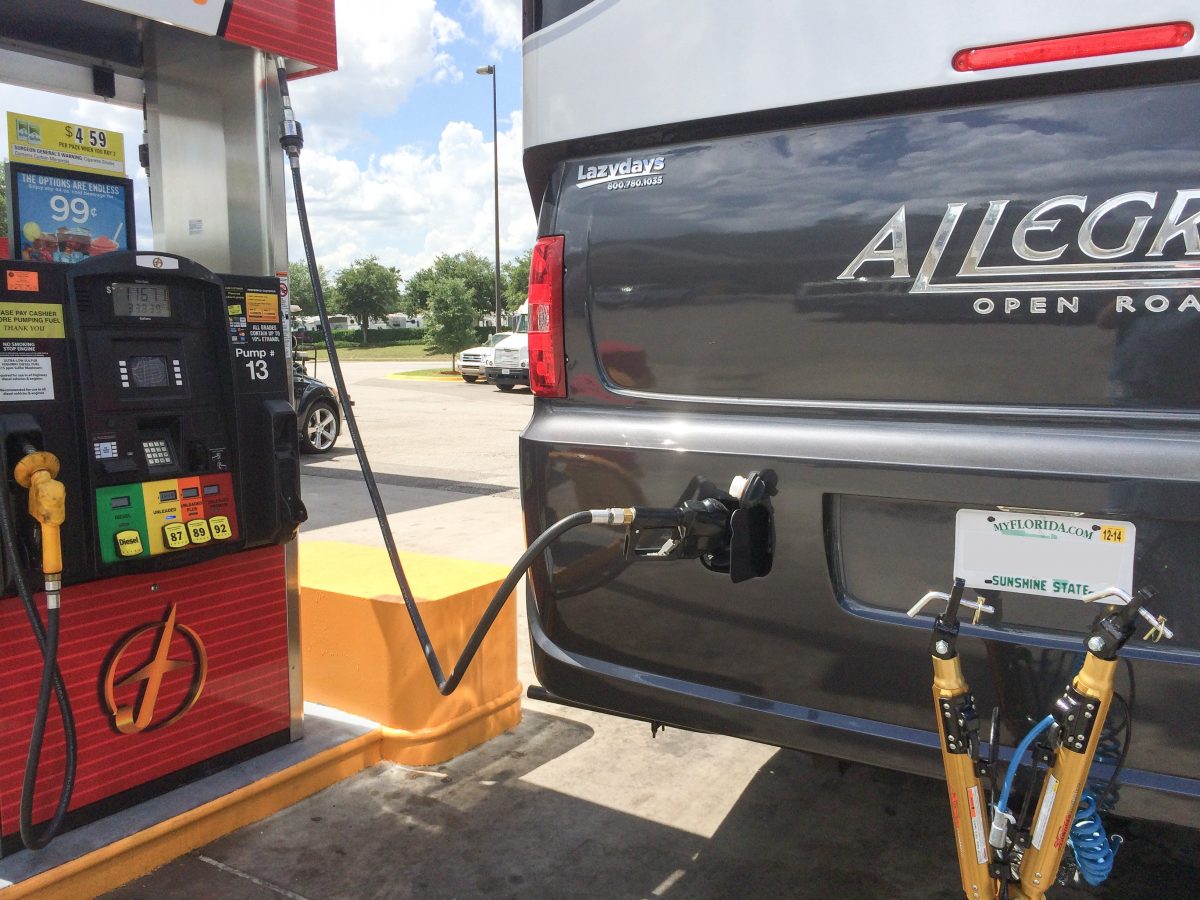
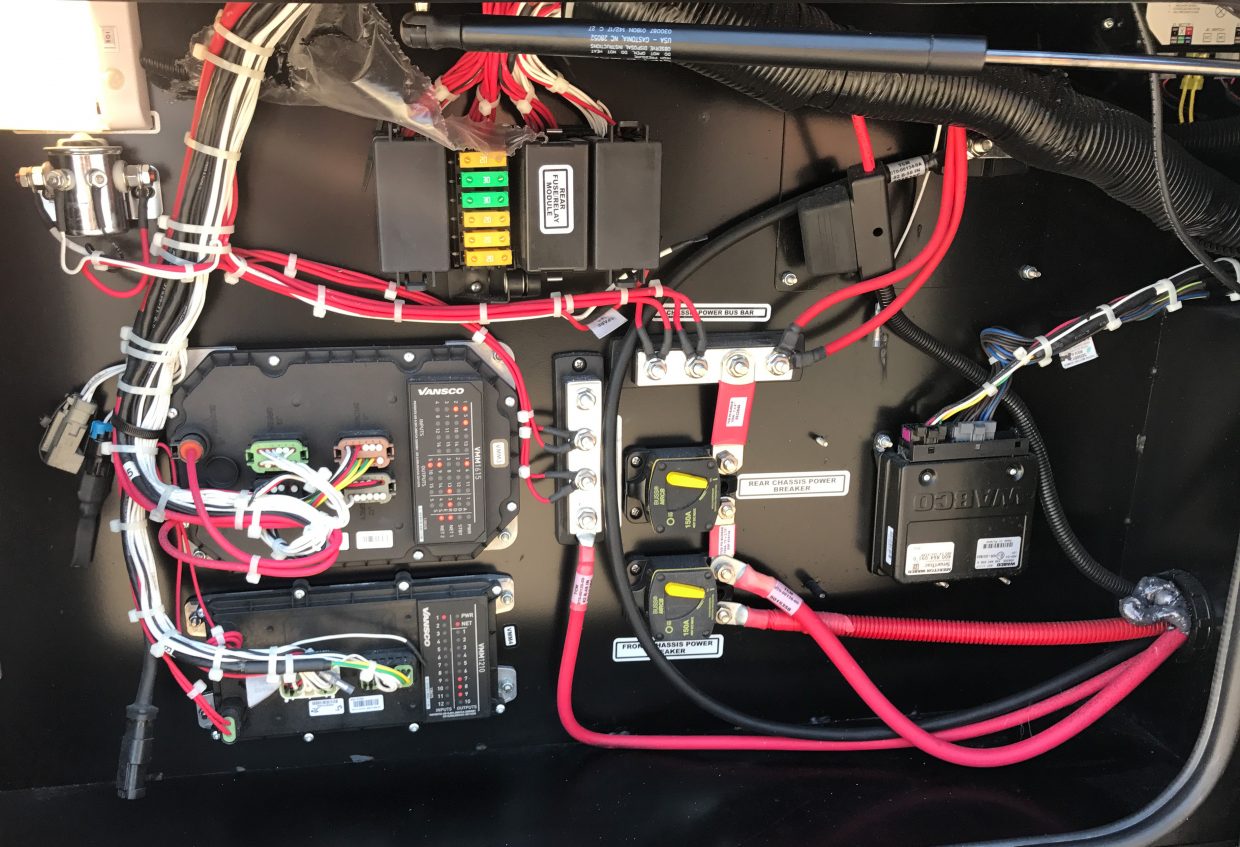
Still enjoy the posts! Good luck with the new rig! I know exactly what you mean with gas vs. diesel. I just got back from a summer trip of 3000 miles with my F250 (gas) pulling my 32′ TT. Like you said… “it does the job” but there is certainly a lot of inertia management! :) (and lots of shifting when going up & down hills of West Virginia) When i was in Missouri, my brother wanted to try pulling my trailer with his 1/2 Ton Nissan Titan XD which is their new diesel. I was amazed at the difference. Love that low end torque.
Safe travels.
Hey Kevin! Yeah, our 5-speed Ford transmission works great on flat terrain, but on any kind of hill it loves skipping 4th and dropping into a screaming-loud 3rd gear. I hear the Allison transmission on the diesels is way better, plus we can control the gears with the shift keypad.
Congratulations. We love our diesel pusher, you both will definitely notice the difference and be happier. I noticed no Alaska visited on your map, does the new rig put an Alaska trip in your travel plans? We are in the planning stage for our Alaska road trip- Summer 2018.
We’re undecided about Alaska. We definitely want to visit, but we’re not sure if we want to put the new rig through that adventure (I’ve heard the highways can be rough on RVs) or maybe park for a couple weeks and do a cruise instead…
Ken and I are enjoying your humor, your insight, and the differences between Rover (Helen) and He-Who-Is-Yet-To-Be-Named … everything you write makes us more than happy with our choice and only wish we could click our heels and get that build completed faster for you !!!
I felt a little bad for Rover while writing this particular post, but I’m sure he understands! :-)
Hi guys….I tried to email you also….did you consider the Tiffin Bus? If so what made you decide on the Phaeton….outside of > $ we downsized from a tag-axle Bus to a 32 Allegro and we are definetly have “Bus Envy” :) :)
Lou, the Allegro Bus is a pretty big price jump, and didn’t have much that we cared about as far as upgrades… the air leveling and side radiator are nice, but other than that it’s mostly “bling”, i.e. nicer counter tops, floors, backsplashes, decorations, etc. The 2018 bus doesn’t have the awesome new 7″ touchscreen home control system that the Phaeton has (which I’ll be describing in the next post), and it has much less basement storage since the chassis isn’t raised like the new Phaeton 40 IH.
Good points. We were in RB in July and saw a Phaeton with the raised rail being built. Very cool. Flat interior floor and extra storage height.!!!
So jealous???.
I have Rovers twin, love it but starting to think diesel.
We are headed to Red Bay currently. Migjt be there mid tolate next week. How long will you be there? Would love to meet Opie… Oh and you two also.
Our build doesn’t start until the second week of September, so we won’t get to Red Bay until then.
Did you consider the 44OH to get the tag axel? Would love info on your color choices as well.
I know a tag axle would improve the drive, but we didn’t really want to go too much bigger. 37′ to 41′ is a big enough jump for us… going all the way to 45′ we thought was a bit extreme… and the base price of the 44 OH is $60,000 higher than the 40 IH!!
Congrats on the purchase, and thanks for the RV education. Let me know when you come back to the North East. A lot of great things to see here.
And Maine! Can’t believe you haven’t been to Acadia yet.
We’re doing New England in the summer of 2018… up through Vermont, New Hampshire, Maine, and into Canada!
Pingback: Life Rebooted – Roughing It… Even More Smoothly
Pingback: Life Rebooted – Farewell Rover